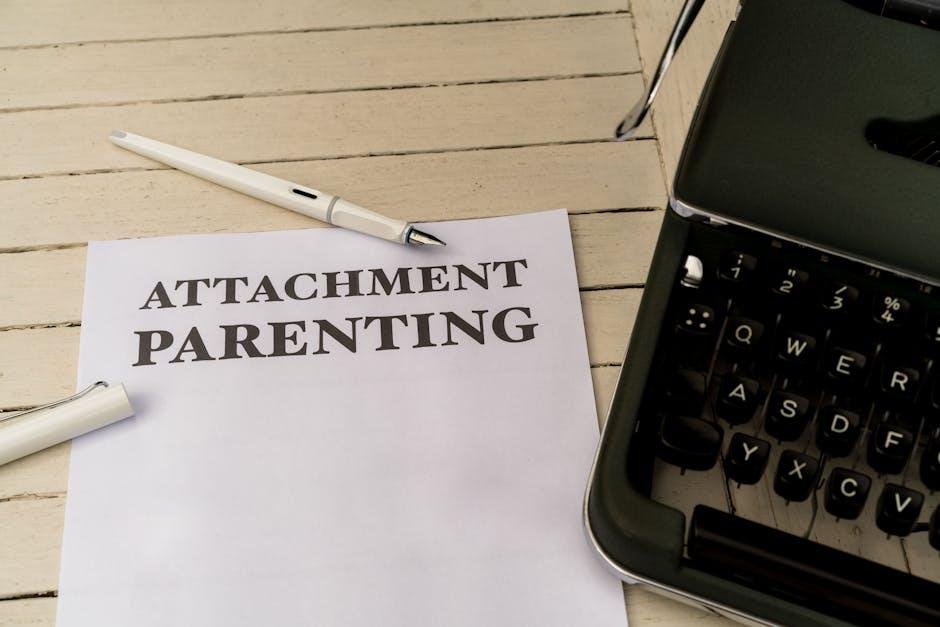The Impact of Childhood Attachment on Adult Relationships
in the intricate web of human connection, few threads are as enduring as those woven in the tender years of childhood. the relationships we form with our primary caregivers often serve as the blueprint for our emotional landscape, shaping how we interact with the world—and more importantly, how we connect with others. As we transition from the innocence of youth into the complexities of adulthood, the echoes of these early attachments resonate through our relationships, influencing our capacity for intimacy, trust, and vulnerability. This article delves into the profound impact of childhood attachment styles, exploring how the bonds formed in those formative years can inform our adult partnerships. By examining the delicate interplay between past and present,we uncover not only the patterns that may hold us captive but also the potential for growth and conversion within our relationships. Join us on this exploration of attachment theory, as we unravel the threads of our emotional history and consider how they shape the fabric of our adult lives.
Exploring the Roots of Attachment: how Early Bonds Shape Adult Connections
Understanding the meaning of our earliest relationships provides insight into the complex tapestry of adult connections. Attachment theory posits that the bonds formed in childhood, particularly with primary caregivers, act as a blueprint for how we engage in relationships later in life. Children who experiance secure attachments tend to develop a strong sense of trust and self-worth, leading to healthier interactions in adulthood. Conversely, those who encounter inconsistent or negative attachment experiences may carry insecurities and fears into their adult relationships, often manifesting as anxiety, avoidance, or an inability to connect deeply with others.
To further illustrate this connection between early bonds and adult relationship dynamics, consider the following table that outlines various attachment styles and their characteristics:
| Attachment Style | Childhood Characteristics | Adult Relationship Traits |
|---|---|---|
| Secure | Consistent care, emotional support | Trusting, open dialog, healthy boundaries |
| Anxious | inconsistent care, high parental expectations | Clingy, overly dependent, fear of abandonment |
| Avoidant | Emotional neglect, emphasis on independence | Difficulty with intimacy, emotional distance, value of self-sufficiency |
This framework emphasizes that the patterns initiated during our formative years are not easily altered, but awareness and intentionality can foster growth and change. by recognizing these deep-seated influences,individuals can work toward breaking unhealthy cycles,allowing for more fulfilling and meaningful connections in their adult lives.

The Role of Secure Attachment in Fostering Healthy Relationships
Secure attachment established during childhood serves as a vital foundation for the development of healthy relationships in adulthood. Individuals who experience secure attachment tend to have caregivers who are responsive, nurturing, and available, which fosters a sense of trust and safety. This foundational trust enables adults to engage in relationships with a more balanced perspective,allowing them to build connections that are characterized by open communication,emotional support,and mutual respect. The positive impact of secure attachment extends to conflict resolution, promoting a collaborative approach in which partners can address disagreements without fear of abandonment or excessive anxiety.
Moreover, adults with secure attachment are often better equipped to navigate the complexities of romantic partnerships and friendships. they demonstrate higher levels of empathy, self-awareness, and emotional regulation, all of which contribute to the formation of strong, enduring bonds. Healthy relationship dynamics flourish when both partners are able to rely on one another, share vulnerabilities, and address issues constructively. The ability to effectively support one another plays an essential role in sustaining satisfaction and intimacy within relationships. In contrast, individuals lacking secure attachment may struggle with insecurities and fears that can lead to overly dependent or avoidant behaviors, subsequently undermining their relational experiences.

Navigating Anxious and Avoidant Patterns: Understanding Adult Relationship Dynamics
Childhood experiences play a pivotal role in shaping the dynamics of our adult relationships, often manifesting in anxious and avoidant patterns.These styles emerge from early attachments formed with caregivers, influencing how individuals perceive intimacy, trust, and emotional availability.For those with anxious attachment, the fear of rejection frequently translates into clinginess or over-dependence on partners. Conversely, avoidant individuals may struggle with closeness, often rationalizing their distance to protect themselves from perceived vulnerability. Understanding these patterns can illuminate the repetitive cycles that many adults find themselves in, empowering them to break free from self-defeating behaviors and develop healthier relational habits.
To navigate these relationship dynamics effectively, individuals should consider the following strategies:
- Self-Reflection: Recognizing one’s attachment style can be a transformative approach to personal growth and relationship enhancement.
- Open Communication: Honest conversations with partners about feelings, fears, and expectations foster emotional connections.
- Therapeutic Support: Professional guidance can provide tools to address deep-seated patterns and encourage new relational strategies.
A clear understanding of these dynamics not only aids in self-awareness but also fosters empathy for partners, facilitating the shift towards more secure attachment styles.

Strategies for Healing Attachment Wounds: Building Stronger Connections in Adulthood
To begin the healing process for attachment wounds, it is indeed crucial to develop self-awareness. Understanding your own attachment style can provide valuable insights into how you relate to others. Here are some strategies to enhance your self-awareness:
- Reflect on Past Relationships: Examine the patterns in your previous relationships, focusing on how your attachment style influenced them.
- Journaling: Regularly write about your feelings and experiences related to attachment to identify triggers and behaviors.
- Mindfulness Practices: Engage in mindfulness exercises to stay present and become aware of your emotional responses in relationships.
Once you have gained a clearer understanding of your attachment style, you can take proactive steps to create healthier connections. building secure relationships often involves developing effective communication skills and fostering trust. Consider the following approaches:
- Open Communication: Share your thoughts and feelings with your partner; transparency is key to building trust.
- Set Boundaries: Establish and respect personal boundaries to promote mutual respect in your relationships.
- Seek Support: Professional therapy or support groups can offer guidance and understanding to help navigate attachment issues.
in summary
the threads of childhood attachment weave intricately into the fabric of our adult relationships,shaping the way we connect,communicate,and ultimately love. As we journey through life, the echoes of our early interactions resonate within us, influencing our emotional landscapes and interpersonal dynamics. Understanding this profound impact can empower individuals to reflect on their past, recognize patterns in their present, and make conscious choices that foster healthier connections. Ultimately, by bringing awareness to the significance of childhood attachment, we open the door to healing, growth, and deeper intimacy in our adult relationships. As the tapestry of our lives continues to unfold, let us embrace the prospect to cultivate relationships that reflect not just our histories, but our hopes for the future.

